The Moor
The moor is a human landscape. Another part of the agricultural desert normally associated with fields the size of football stadiums, stripped of the true natural world.
We often call the moors wild places, but they are far from it. For thousands of years, the human hand has cleaved away Britain’s temperate rainforests here in Cornwall, opening up spaces for farming. Echoes of the ancient woodland remain in half-forgotten patches where the air is thick with moisture and the gnarled branches mantled with moss and lichen.
Cornwall’s Bodmin Moor is bleak but beautiful. Thomas Hardy wrote so evocatively of the fictional moors and heathland of Egdon in The Return of the Native that it gains an almost human quality, becoming its own character in the story. I feel it here too. What drives me to the moors is the open landscape. Despite being man-made, I enjoy finding open spaces, silent, save for the wind moaning through the rocks and grasses. I like to feel small. To remind myself I am one piece of something much bigger.
What also drives me here is its snapshot of human endeavour. Park outside the small village of Minions, and in a short distance, I discover human activity ranging from Neolithic times to the modern day in the space of a short walk.
Human History in the Landscape
Before reaching the car park, I passed the two remaining fragments of King Doniert’s Stone. A 9th-century memorial cross to Cornwall’s last king. Despite a millennium of brutal moorland weather, the intricately carved lattice work is still visible, as is the Latin inscription. Cornwall’s final king, pleading with passersby for prayers for his soul. Long Tom, a phallic-shaped menhir repurposed by early Christians to form a cross, is the next noticeable human landmark. While dotted across the landscape are the iconic mining houses with their tall chimney. The twin windows on the upper floor and the large awning doorway at ground level make the buildings look like faces
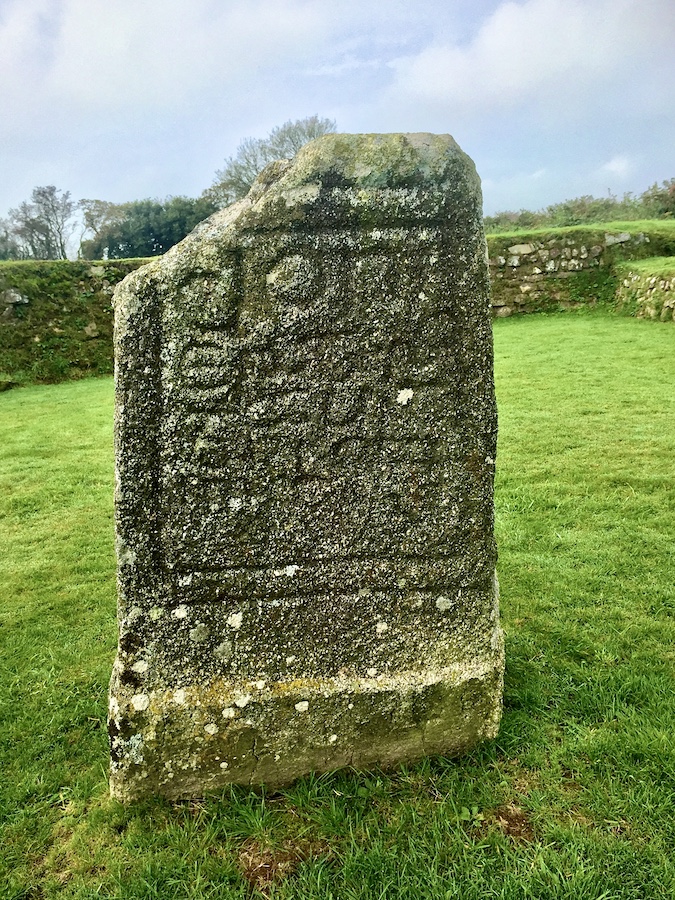
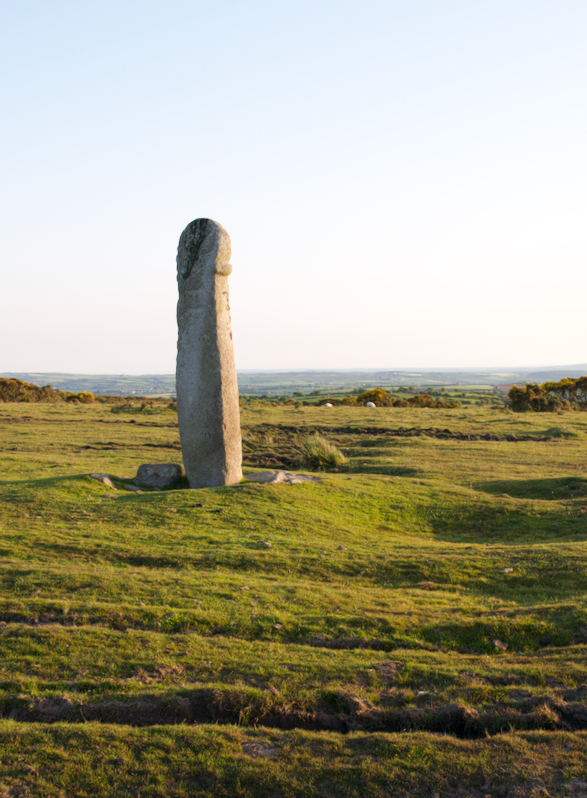
From the car park, I walk through the pock-scarred landscape where our mediaeval predecessors quarried for tin and find The Hurlers. It’s not just one stone circle but three. I was fortunate to come up here a few years back when local archaeologists were excavating and went on a guided walk around the area, spotting archaeology.
The Hurlers Stone Circles
The Hurlers name came, typically, from a Christian warning to not have any fun on a Sunday. A group of men decided rather than spend a day in church, they would play Hurlers and were petrified as punishment. Nearby are two standing stones forming a sort of gateway, and these are the Pipers, who were playing music at the time and equally suffered the same fate.
A trio of circles in close proximity is rare in itself. What makes The Hurlers even more intriguing is the quartz pavement between the northern and central circles. I saw it during the excavation. But now it lies hidden beneath the surface. You would expect it to be uniform, but this isn’t the case, and one of the archaeologists I spoke to said it bore a striking resemblance to the Milky Way. There was speculation of a fourth circle, but the excavation disproved this.

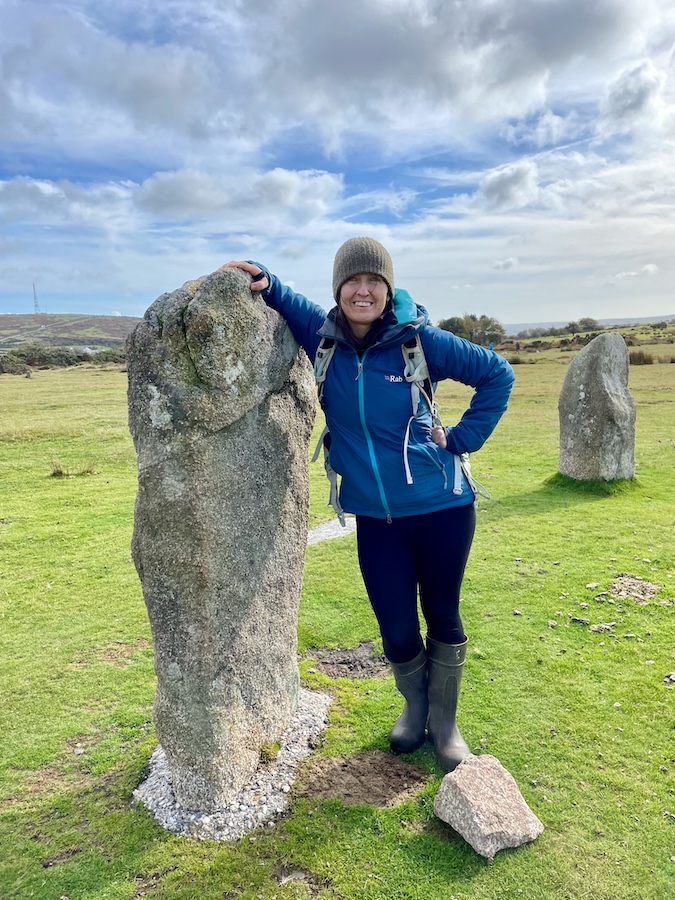
Of the three, the central circle is the most complete, although this one has had the most reconstruction. Cattle had uprooted many stones (they make wonderful scratching posts) and many have been snaffled by people over the years, probably to be repurposed as a gatepost or lintel. The cottage I currently live in has some pretty hefty lintels, and it wouldn’t surprise me to discover they came from somewhere like this.
It is suggested each circle had 29 stones, a number associated with the lunar month (and a good average for the length of the feminine cycle). They aren’t perfectly round, but if you read into the astrological theories around stone circles, the strangely misshapen look plays a significant role in cosmic alignments. The stones in the central circle were smoothed, and the floor was covered with quartz crystals.
Looking at it now on the bleak moor with the wind screaming in your face, robbing you of breath, it is a task to envisage what our ancestors had witnessed. The white floor and pavement must have been akin to the Great Pyramid capped in white marble, gleaming brilliantly in the light.
I do like to wonder what went on here. I forgot who said (if you know, please tell me) that archaeology is like trying to see the snowman from a carrot and a few lumps of coal. So little evidence remains that filling in the blanks is sometimes impossible. When I visit these places, I liken it to a school after dark on a weekend. A place typically filled with children and adults with lots of noise and things going on. You take that away and it’s like a dead body. You rip out the soul and you’re left with nothing to gauge what made it vibrant and alive.
I go to castles and hill forts, and I can mentally build from the foundations up what had been there before. Settlements or places where people lived and worked are easier to envisage. Looking at a stone circle, you mostly think, what on Earth were you doing?
It’s All Ritual
This term is archaeology speak for, ‘I dunno.’ In many cases, they probably are right, it is ritual, but until we invent time travel, we can rarely be sure we are 100% right. Many stone circles have astrological alignments to the sun and moon at different times of the year. Experiments have also suggested it would have been possible to calculate lunar and solar eclipses by making post holes in a circular shape and moving them like hands on a clock as the days progressed.
My feeling is that the movement of the sun, moon, stars and planets was important. There was no light pollution. No Netflix. Knowing when to farm and when certain animals migrated was key to sustaining a tribe. Tracking the moon may have purely been as a timepiece or used to increase farm produce (it is proven gardening by the moon phase does this). Maybe the stone circle acted like a town hall or a meeting place? Or maybe it is all ritual.
But I am projecting my thoughts.
A place to sit and feel
Sometimes it is better to sit in these places and feel. I know what it is like to live in the here and now. I can’t perceive life back in those times. However, I can connect to the human condition, and my emotions are no different from those of my distant ancestors. How do I want to feel? Safe, loved, cared for, part of a community, accepted. Then I tap these feelings into these places.
What would archaeologists in hundreds of years think of all the sewage waste found in our rivers if they had no written information? Maybe they will think we worshipped a fertility water goddess because they recovered remains of tampon applicators, nappies and condoms. Or there was a revival in worship to Norse gods because so many of them crop up in Superhero movies, and the likes of Thor, Loki, The Hulk, Batman and Wonder Woman end up becoming a sort of Pantheon, fuelled by the half-remembered storyline from The Avengers movie that transcends the ages like Beowulf.
The remains suggest a ritualised landscape that leaned heavily towards death. The axis through the centres of the two northern circles aligns with the Rillaton Barrow, where a gold cup was found and now resides in the British Museum. The axis of the southern pair of circles aligns with a cairn to the southwest. But tombs are memorials, and a grave with grave goods is something tangible for archaeologists to dig. We see death, but that’s not to say there was no celebration of life here. Did they celebrate marriages, births, and the human lifecycle from childhood, adolescence, adulthood, and middle and old age?
The stones themselves have their own character. I always feel drawn to specific ones more than the others. The shapes alternate from slender, angular uprights to ones which are much softer, suggesting they have their own symbolic qualities. Perhaps the slender stones are masculine while the softer shaped stones are feminine? Who knows? But it seems logical to have unique stones in the same ways we have names.
Barrows, Giants, and Enclosures
From The Hurlers, I wander to the Rillaton Barrow, the largest on Bodmin Moor. In a landscape so lumpy from quarrying, it is not immediately obvious. Then I realise I’m looking at a long barrow. I climb upon it and find a deep depression where it has caved in, leaving sodden grass in about a foot of water. On the eastern side, I find the entrance. I’m tempted to clamber in through the small aperture, but I decide to keep to the land of the living. Inside, Goblin’s Gold, a luminous green moss, glows in the gloom. I see the placed stone inside expertly worked. The final resting place of someone of great importance.
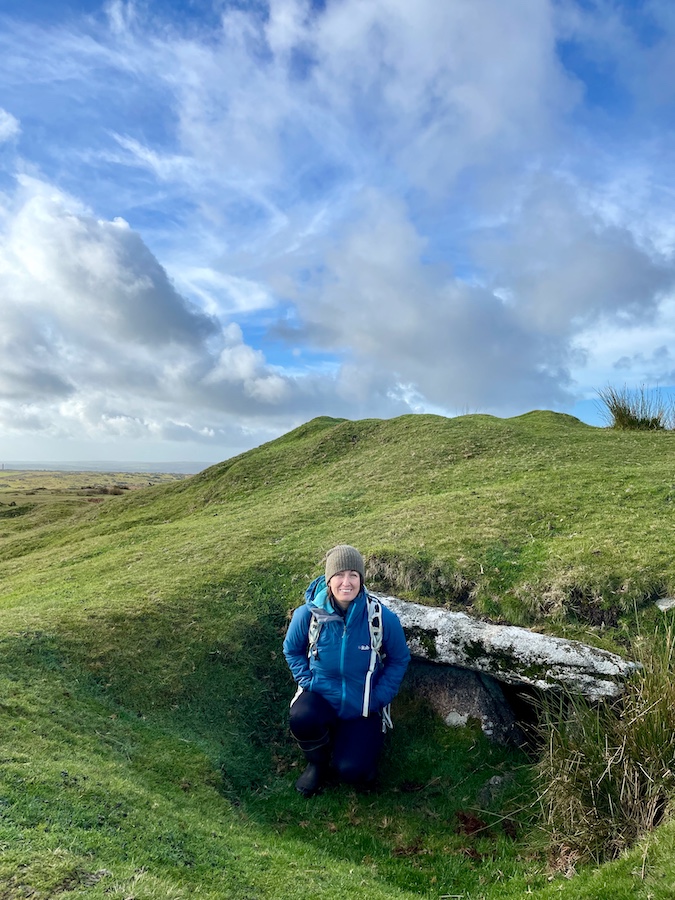
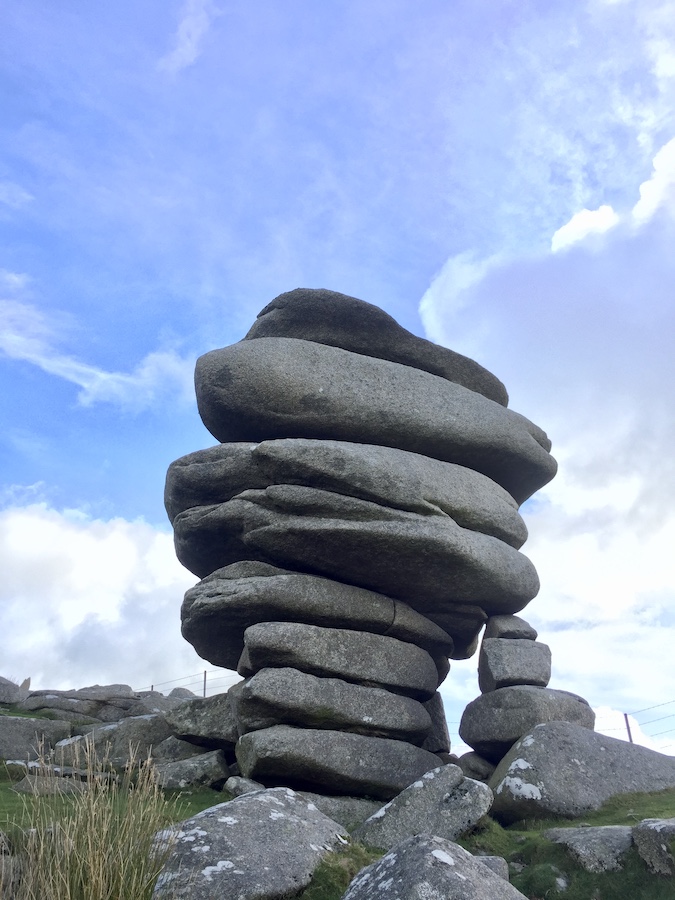
Continuing north, I spy the Cheesewring, a natural granite tor which looks like a giant decided to balance rocks on top of each other.
Actually, the Christianised story goes that the local giant, Uther, was sent by his giant mates to face Saint Tue because they were fed up with all these Christians turning up in their land and preaching and forcing everyone to convert to their one god. They decided to have a stone throwing contest (as you do). Uther threw a massive rock. Saint Tue, with help from his god, threw a rock on top of Uther’s. They continued in this manner until Uther hurled a thirteenth stone at the stack and missed. Saint Tue used his next trick and had an angel pop up and carry the stone onto the pile. Uther, awed, converted to Christianity.
The granite tor does seem to defy the laws of gravity, which is possibly why there is a pre-Iron Age enclosure circling it named Stowe’s Pound. And not by just one wall, but two. Inside, we find the remnants of house platforms and some Bronze Age cairns, so likely a popular stop if you were passing in its heyday. This site was almost lost to the nearby quarry, but locals rightly protested, and the Cheesewring and enclosure were saved.
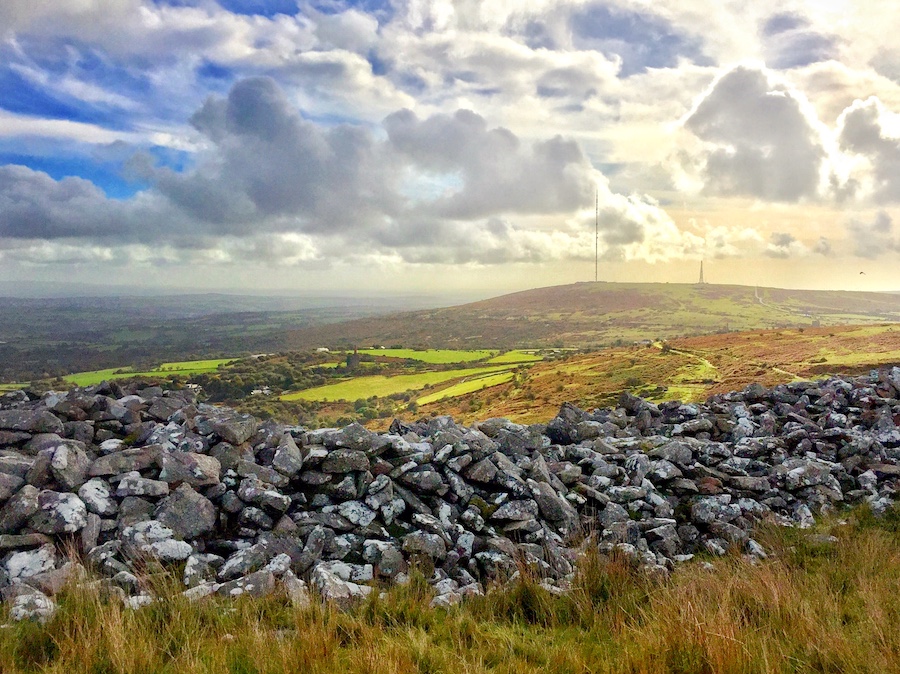
Another local oddity just below Stowe’s Pound is Daniel Gumb’s cave. Born in the 18th century, Daniel, like most people, tried to keep day-to-day costs low. He just went to some extremes to do so. A stone cutter by trade, he came across a granite slab (measuring 3m by 10m), excavated beneath it and made a cave for himself and his family to live in, rent-free. Due to more recent quarrying, Daniel Gumb’s cave was relocated to where it stands today. In its dilapidated state, it feels very primal, but scattered around, chipped into granite, are remnants of Daniel Gumb’s life. In his time, he was known as a mountain philosopher and used the giant roof as an observatory where he watched the stars, caving mathematical diagrams into the rock.


I could keep wandering, stumbling across echoes in the ancient landscape, but my stomach tells me it would be a good time to return to the car and nip into Minions in search of a pasty.
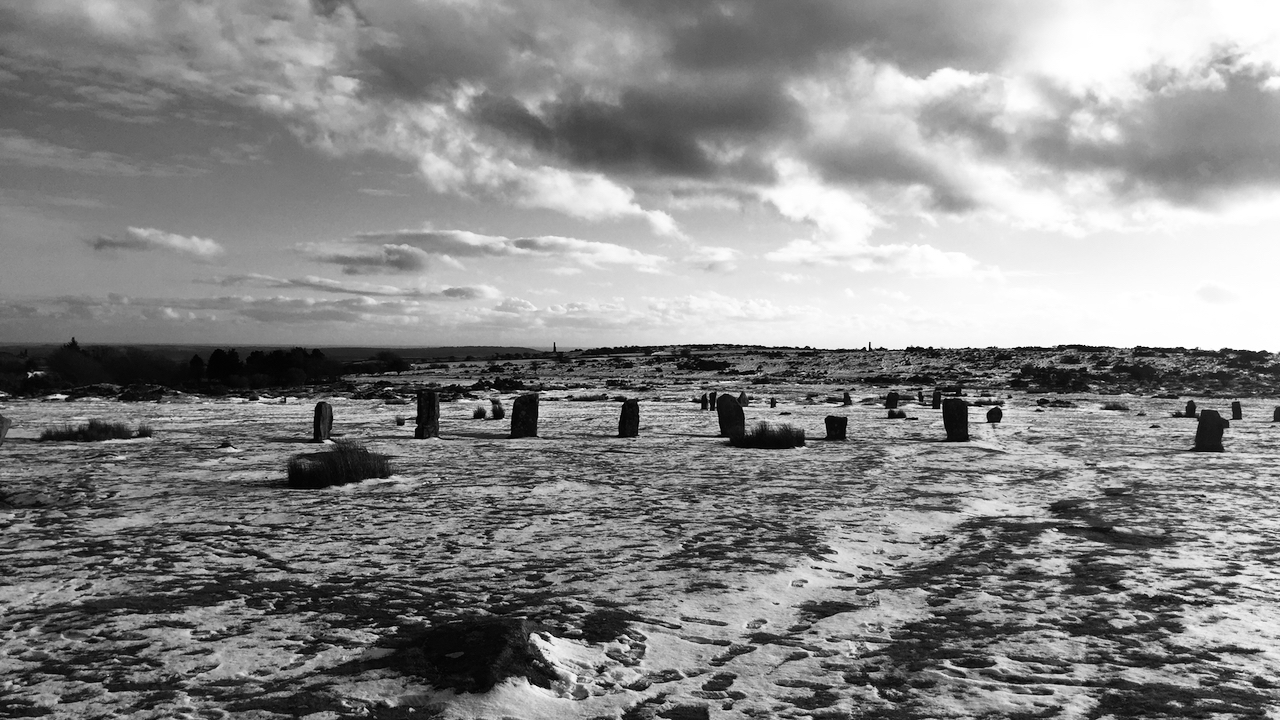
Pingback:Boscawen-ûn Stone Circle – Emma Cox